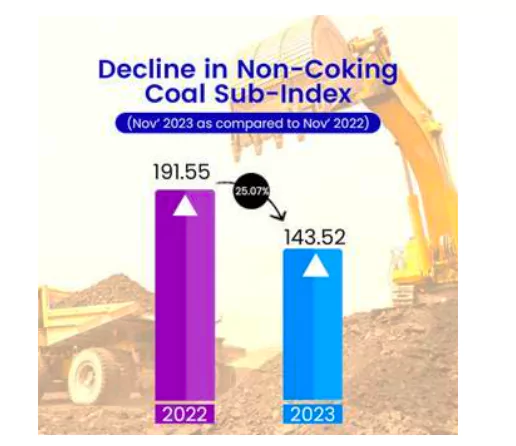Context
According to the Ministry of Coal, there has been a reduction in the share of coal imports in the total coal consumption in the country.
Coal Reserves in India
- India is endowed with the fifth-largest coal reserves globally and stands as the world’s second-largest consumer of coal.
 Gondwana coal, which is free from moisture and contains phosphorus and sulphur, makes up to 98% of the total coal reserves in India and 99% of the coal production in India.
Gondwana coal, which is free from moisture and contains phosphorus and sulphur, makes up to 98% of the total coal reserves in India and 99% of the coal production in India.-
- It is India’s metallurgical grade as well as superior quality coal.
- They are found in the Damodar (Jharkhand-West Bengal); the Mahanadi (Chhattisgarh-Odisha); the Son (Madhya Pradesh Jharkhand); the Godavari and the Wardha (Maharashtra-Andhra Pradesh); the Indravati, the Narmada region.
- Tertiary Coal Fields: Carbon content is very low but is rich in moisture and sulphur and are found in extra peninsular regions such as Assam, Meghalaya, Nagaland, Arunachal Pradesh.
Trends in Coal Market
- Decline in share of imported coal: The share of coal imports declined to 21% during April 2023 to January 2024, which was 22.48% during the corresponding period of previous year.
- Shift Towards Domestic Coal: The decrease in imported coal for blending indicates a move towards using domestic coal, reducing import reliance.
- Decline in imported coal for blending: There has been a reduction of 36.69% in the volume of coal imported for blending by thermal power plants, during April 2023 to January 2024, in contrast to the same period of the previous year.
- Increase in coal imports by coal based power plants: However, there has been a notable increase of 94.21% in coal imports by imported coal-based power plants during April 2023 to January 2024, compared to the corresponding period in the previous year.
- Decline in Import Prices: During April 2023 to January 2024, average coal prices from South Africa and Indonesia fell by 54% and 38%, respectively. This benefitted India due to its heavy reliance on thermal coal imports from these countries.
- Reduction in Auction Premium: Substantial reduction in the auction premium received by CIL, over the notified price of coal. It has decreased from 278% in the period from April 2022 to January 2023, to 82% during the same period in the last fiscal year.
- Ample availability of coal: The reduction in auction premium is a testament to the ample availability of coal (currently 96 MT coal stock with coal companies) in the market.
- Decline in National Coal Index (NCI): NCI has shown a significant decline of 17.54 % in November 2023 at 155.09 points compared to November 2022, where it was at 188.08 points. This indicates a strong supply of coal in the market.
National Coal Index
- It is a price index that combines coal prices from all sales channels, including Notified Prices, Auction Prices, and Import Prices.
- Established with the base year as fiscal year 2017-18, it serves as a reliable indicator of market dynamics, providing valuable insights into price fluctuations.
|
Reasons for Decline in Coal Imports in India
-
Advanced Technology:
- Usage of advanced technology has significantly enhanced the production capacity of public sector undertakings.

-
- Notably, Coal India Limited has experienced a growth rate exceeding 10%.
-
Transparent Auction Mechanism:
- The transparent auction mechanism for coal blocks, devoid of end-use restrictions, has started yielding favorable outcomes.
-
Increase in Production From Captive and Commercial Sources:
- Coal production from captive and commercial sources has seen a CAGR of around 22.50% over the past five years, underscoring the supportive role rendered by State Governments.
Conclusion
With strategic focus on optimizing indigenous coal resources and leveraging innovative technological solutions, India continues its journey towards self-reliance or Atmanirbharta in energy security of the nation.
Also Read: Production And Challenge Of Coal & Petroleum
![]() 23 Mar 2024
23 Mar 2024
 Gondwana coal, which is free from moisture and contains phosphorus and sulphur, makes up to 98% of the total coal reserves in India and 99% of the coal production in India.
Gondwana coal, which is free from moisture and contains phosphorus and sulphur, makes up to 98% of the total coal reserves in India and 99% of the coal production in India.